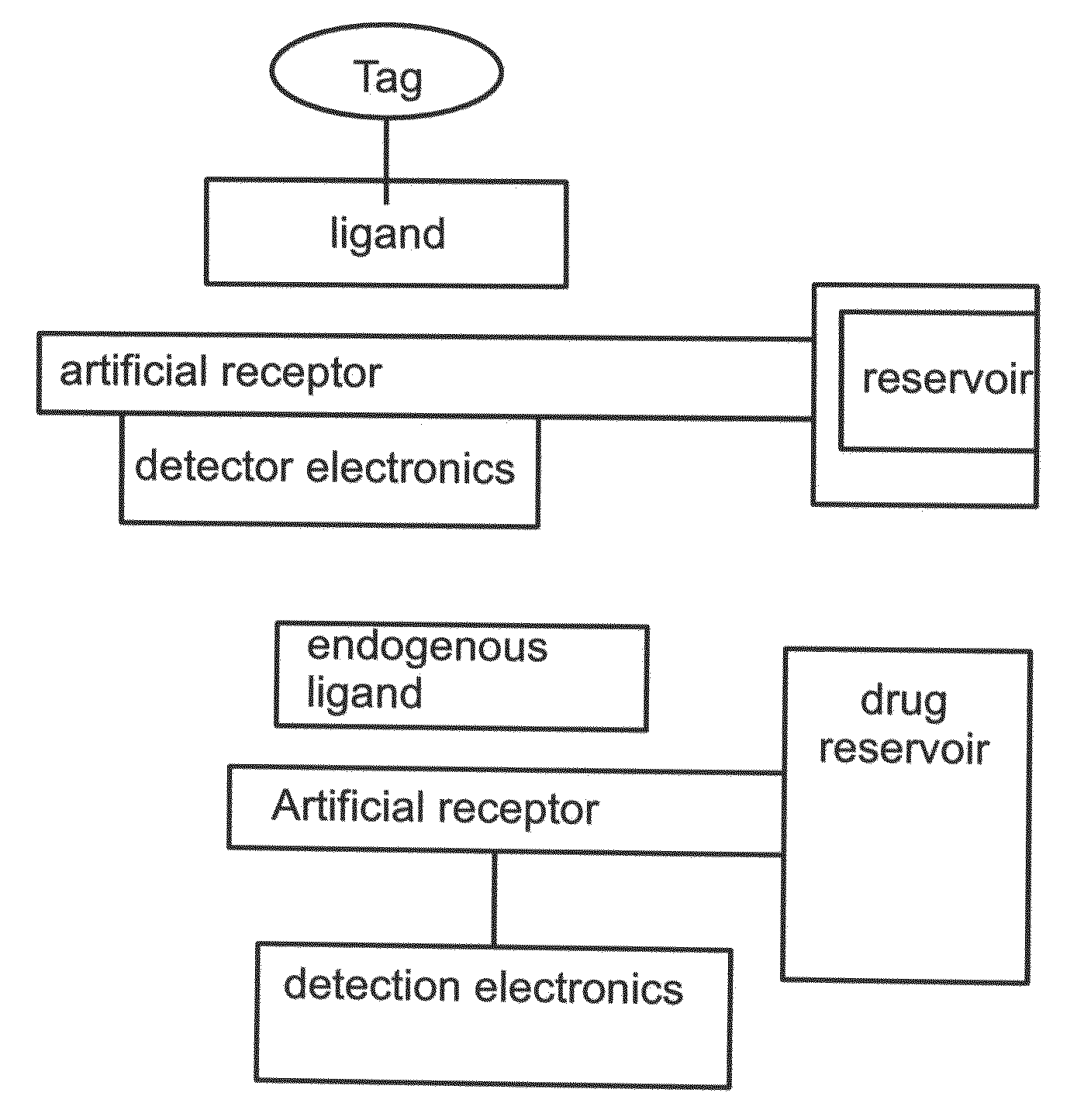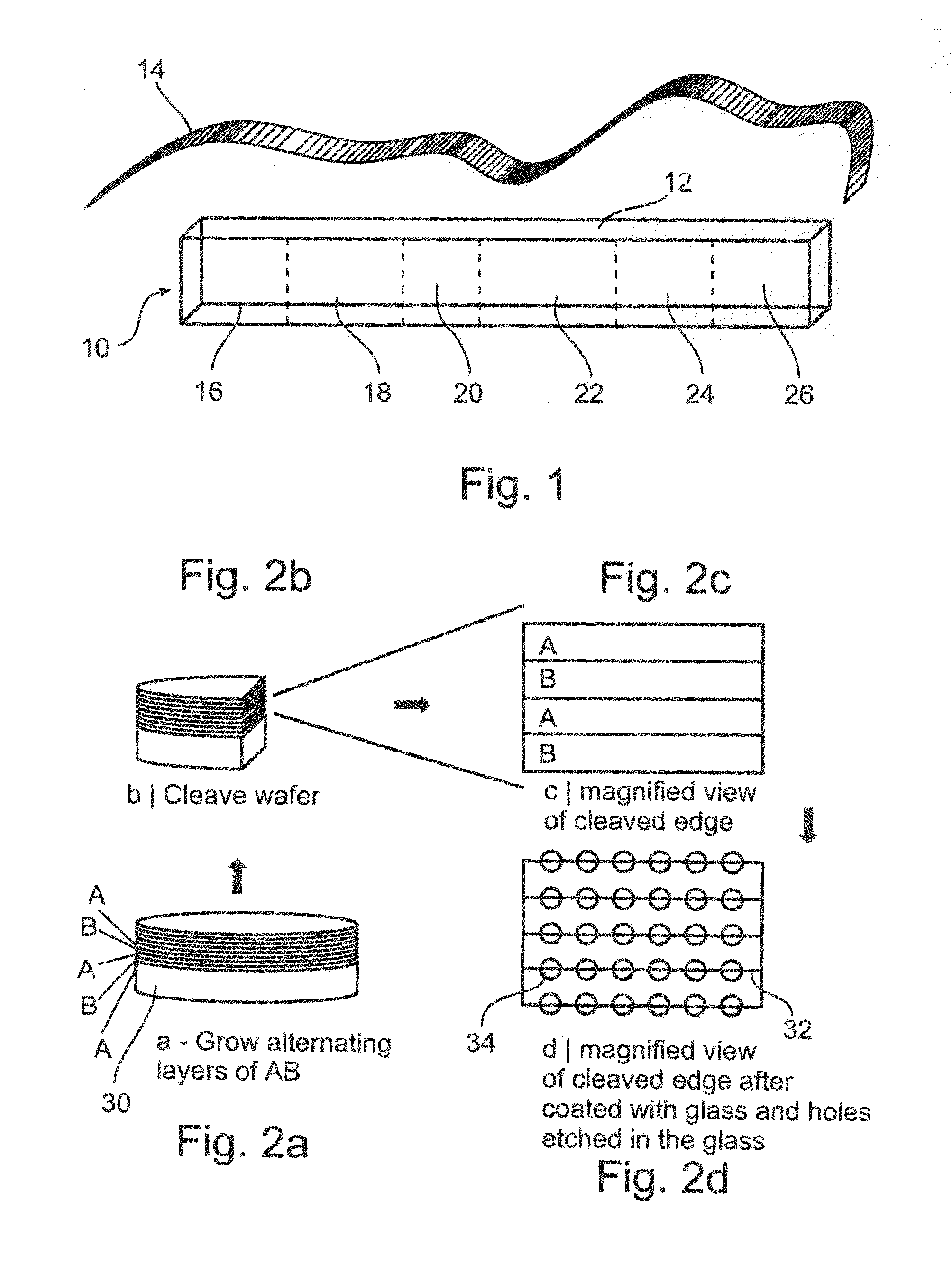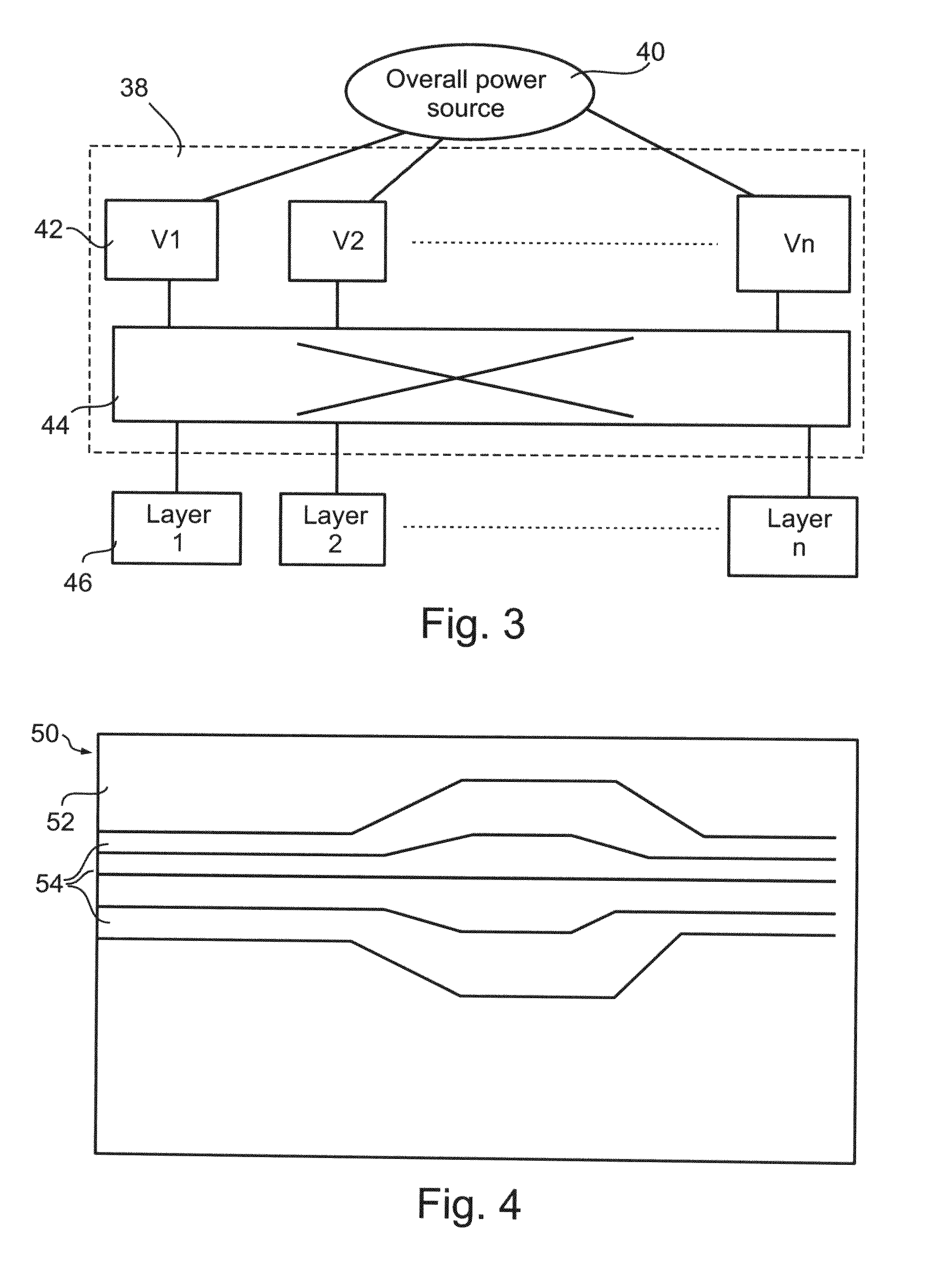Artificial receptors
a technology of artificial receptors and receptors, applied in the field of artificial receptors, can solve the problems of affecting the effect of the treatment
- Summary
- Abstract
- Description
- Claims
- Application Information
AI Technical Summary
Benefits of technology
Problems solved by technology
Method used
Image
Examples
example 1
A Depletion Step Prevents Non-Specific Binding of Phages to Semiconductors
[0360]Studies by Whaley, S. R., (2000, Supra), have shown that phage display peptides bind GaAs (100) preferentially to GaAs (111A) and (111B). However, when one of these peptides was later synthesized and applied to GaAs, no selectivity was found between the (100) and (110) facets [Goede, K., 2004 (Supra)]. To test the reasons for such a discrepancy the present inventors have studied the non-specific binding of M13 phages, carrying no peptides or antibodies, to GaAs (100), GaAs (111A) and GaAs (111B), as follows.
[0361]Experimental Results
[0362]Binding of helper phage to semi conductors—Phages and the GaAs substrates were interacted and following panning and elution the density of phages was estimated from a count of colonies on agar plates. As is shown in FIG. 13, in the absence of a depletion step the non-specific binding of the M13KO7 helper phage is higher on GaAs (100) as compared to GaAs (111A). Thus, th...
example 2
Enrichment of scFv Binders Depends on Panning Cycles and Depletion Steps
[0364]To test the possibility that a human antibody library (e.g., scFv library) contains binders with preferred selectivity to a specific surface of a seminconductor such as GaAs, the present inventors have performed several cycles of panning and counted the number of phages eluted following each panning step, as follows.
[0365]Experimental Results
[0366]Selection of scFv binders to GaAs (111A)—To select scFv phage binders to GaAs (111A), about 1011 phages (˜100 copies of each library clone) were applied to the semiconductor crystal (the panning step). After washing the unbound phages, the bound ones were recovered by rinsing the sample in an alkaline solution. The recovered phages were then quantified by infecting bacteria and plating dilution series on Petri dishes. The amplified sub-library was applied again to the target crystal facet and so on. It typically took three to four panning rounds to isolate excell...
example 3
Binding of Monoclonal scFv Phages to Semiconductor Facets
[0373]The polyclonal population of selected phages contains different scFv fragments, each characterized by different affinity and selectivity to the two crystalline facets. To correlate specificity with a specific amino acid sequence, the binding selectivity of individual clones was analyzed. Monoclonal binders were isolated by infecting E. coli bacteria with the sub-library and plating them on solid agar. Since each bacterium can be infected by a single phage, all bacteria in a given colony carry DNA coding for the same scFv fragment. Infection of the colony with helper phages resulted in release of phages displaying the same scFv on their PIII coat proteins. The isolated monoclonal phages were then analyzed by ELISA against GaAs (111A) and (100), as follows.
[0374]Experimental Results
[0375]ELISA analysis confirmed selectivity of phage display antibodies to the semiconductor surfaces—After 4 rounds of panning and 2 rounds of ...
PUM
| Property | Measurement | Unit |
|---|---|---|
| Electric potential / voltage | aaaaa | aaaaa |
| Strength | aaaaa | aaaaa |
| aaaaa | aaaaa |
Abstract
Description
Claims
Application Information
 Login to View More
Login to View More - R&D
- Intellectual Property
- Life Sciences
- Materials
- Tech Scout
- Unparalleled Data Quality
- Higher Quality Content
- 60% Fewer Hallucinations
Browse by: Latest US Patents, China's latest patents, Technical Efficacy Thesaurus, Application Domain, Technology Topic, Popular Technical Reports.
© 2025 PatSnap. All rights reserved.Legal|Privacy policy|Modern Slavery Act Transparency Statement|Sitemap|About US| Contact US: help@patsnap.com



